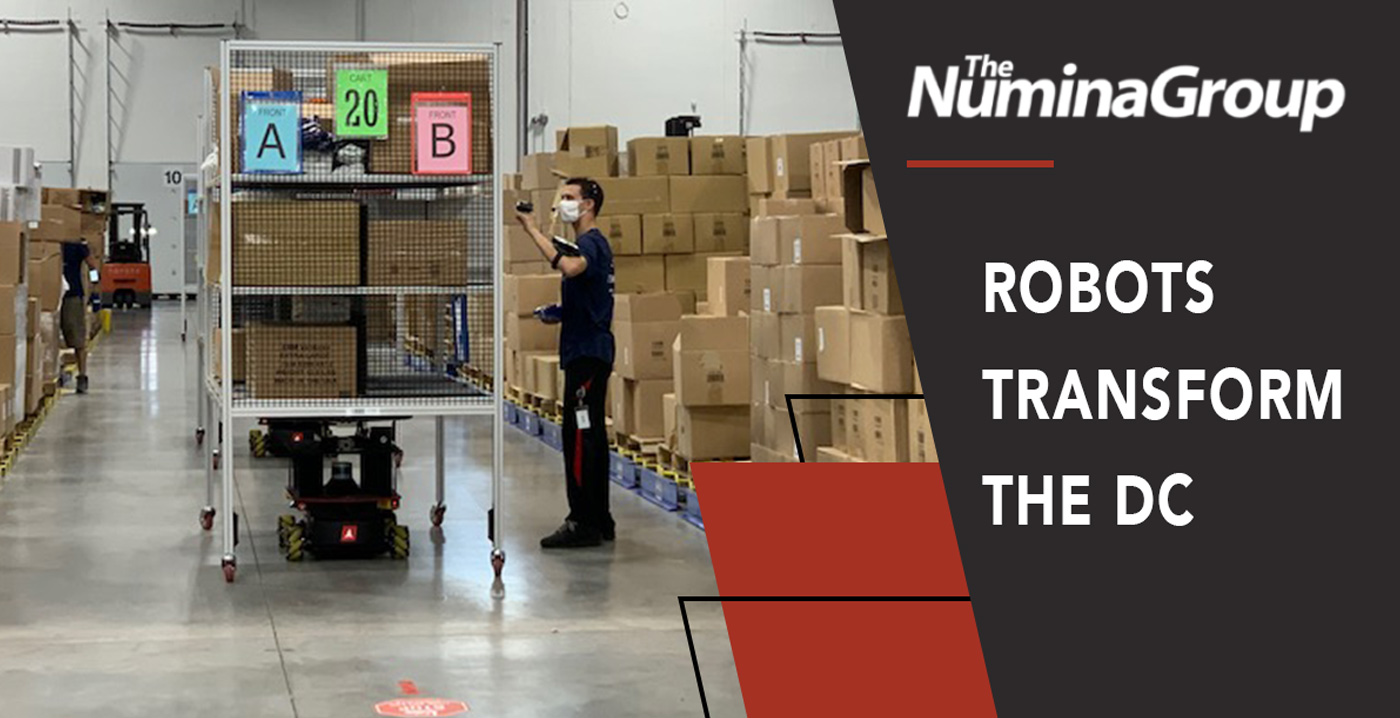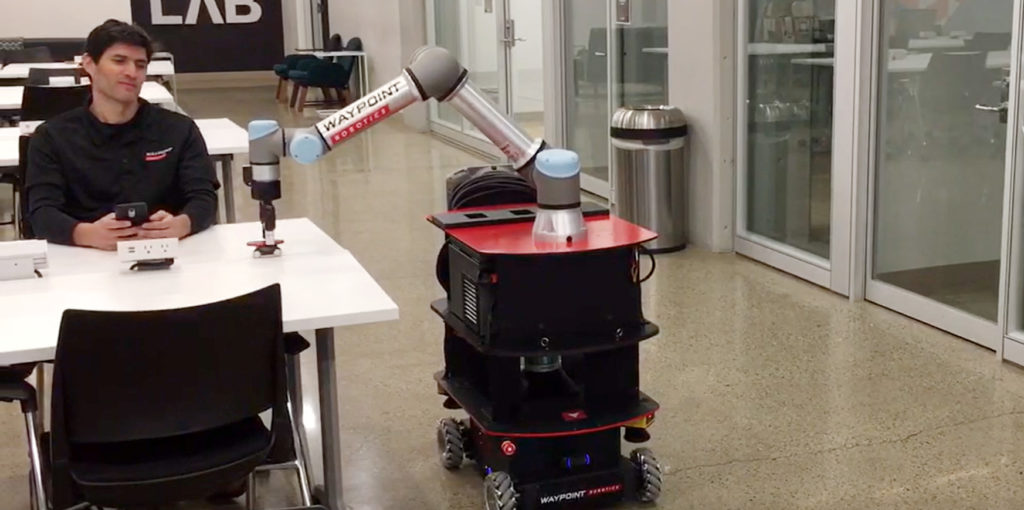

Another significant technological advancement occurred in 61’ that has revolutionized manufacturing. This was the year General Motors brought the first Unimate robot, invented by George Devol, into an assembly line at its New Jersey facility.
These early robots were crude by today’s standards, with minimal safety features, lacking sensors to detect people or objects. Their purpose was to eliminate dangerous work by reducing repetitive manual heavy work tasks, not only in the automotive industry but throughout all manufacturing industries.
Fast forward almost 60 years – robots have evolved tremendously and can be found in virtually every industrialized manufacturing operation. Their top use remains eliminating heavy material movements, but they are far nimbler and more intelligent, able to perform complex machining, high speed assembly and inspection tasks. Robots are also able to perform in inhospitable environments – hot, cold, and toxic conditions.
Robots are the path to re-building manufacturing in the US.
Robots are now quickly revolutionizing distribution and supply chain operations. Businesses are seeing the great impact warehouse robotics can have on improved productivity, accuracy and employee satisfaction by eliminating wasted time performing manual material movement in warehouse operations.
Advancements in software and technology are enabling more sophisticated, yet cost-effective next generation robots to emerge. These robots handle a wider range of load capacity and perform multiple work tasks independently or in cooperation with a supervisory automation system to coordinate with employees to boost productivity in receiving, replenishment, and order picking applications.
Artificial Intelligence (AI) – AI has been around since the early 80‘s – computer programs modeling human intelligence used AI to enable adaptive learning and make better decisions.
AI, combined with LIDAR, 2-D barcode and camera sensors integrated with low cost embedded computers and AI software allow the newest robots, Autonomous Mobile Robots, (AMR’s) and the latest generation Automated Guided Vehicles, (AGVs) to continually adapt and navigate safely around obstacles and to work cooperatively with people within warehouse operations.
Automated Guided Vehicle (AGV) – Transport robots that can use a basic guidance system such as following either a magnetic wire located on the surface or buried in the floor. The AGV can trace its history to the 1950s, developed first by Barrett Electronics of Northbrook, Illinois. At the time, it was simply a tow truck that followed a wire in the floor.
Wire guidance is still very useful for many basic applications, including point to point, and narrow aisle pallet and tote storage and retrieval applications.
More sophisticated guidance systems are lasers and Lidar, which uses light in the form of a pulsed laser to measure distance. Also, today’s more sophisticated applications typically use vision based cameras, magnets, or lasers for navigation.
Automated guided vehicles or (AGV) are focused on automating material movement. Applications include pallet movement from receiving to put away and full pallet picking applications.
However, a myriad of new, smaller, lower cost auto-guided carts are emerging for use in E-Com and B2B order fulfillment applications. These smaller auto-guided carts are designed to automate order movement in picking and packing and to replace order transport duties which are currently the domain of fork trucks and conveyor systems.
These more sophisticated AGVs use a combination of Lidar and camera based vision technology to detect, maneuver and map beams, walls and permanent objects throughout the facility. The AGV’s sensors combined with AI software create maps of the DC travel paths, so the vehicles can continue to learn warehouse paths for performing the movement of pallets and materials, including rolls, and other unit load movements throughout a manufacturing operation and between adjoining manufacturing and warehouse facilities. AGVs can be extremely useful for tasks such as moving inventory in the warehouse and freeing up employees to handle other work. Pallet and unit load AGVs are most cost-effective when deployed round the clock, in 6-7 days a week operations, eliminating fork trucks and associated labor costs.
Autonomous Mobile Robot (AMR) – These robots appeared on the scene in the last decade and are the latest generation of vehicles, evolving rapidly due to the use of the latest onboard intelligence, vision and LIDAR sensor technologies. They have the capability to sense and learn the warehouse environment, detect objects and safely cooperate with people.
They are designed to integrate with WMS and WES-WCS systems to obtain supervisory commands and self-navigate throughout the warehouse, executing work instructions. The WES-WCS manages and directs the order fulfillment pick, pack, and ship processes and the AMRs and workers’ work tasks. Order picking, packing and transportation of orders operated are combined in a coordinated single integrated operation.
An excellent application for AMRs is in E-Com or B2C order fulfillment picking applications requiring intelligent order zone routing. The AMRs are ideally suited to the task of automating the transportation and movement of batch picking carts throughout the pick, pack, and ship processes.
In this application, the WES-WCS receives order information from the ERP or WMS, creates and releases optimized batches of orders, and calculates the cart capacity and order carton sizes using cartonization rules based on SKU cube and weight.
Orders are then prioritized and a group of orders are assigned to the pick cart. AMR’s have the ability to move loads of 700 LBS and can easily handle large batches of 20 to 25 orders, with a mix of pick to carton, totes, and full case picks on the same cart.
The WES directed solution combines the advantages of AMRs and voice-directed batch picking with the WES directing the AMRs to automatically pick-up the batch pick cart and transport the cart throughout the required picking zones.
The AMRs are doing the heavy lifting and automating the cart movement throughout the order pick zones and dropping off the pick completed orders at a series of packing stations along an automated pack and ship conveyor system.
Both the operator’s movement, picking instructions, and the AMR’s travel route to the required pick zones and storage location are managed by a single WES software application.
The results – the operators spend more time picking instead of time wasted walking, and fatigue is eliminated while safety is increased due to the elimination of pushing around a 500 lb pick cart.
AMR picking is a hybrid goods-to-person process. It brings the prioritized work to the person, executes a more efficient order picking process and order transport to packing without human guidance. They can also be used to move products from receiving to order put-away zones and can be configured to include powered conveyor on the top platform for pallets, cases, and tote transport or pick up AMRs with new or existing conveyor systems.
Collaborative Robot (Cobot) – Cobots are designed to work safely alongside employees. AMRs and Cobots are many times referred to by the same name. They emerged in 1996 from Northwestern University, developed due to employee safety concerns in manufacturing assembly, tool changing, and machine tending applications.

Like the AGV, Cobots have rapidly evolved with greater dexterity. They can sense and react to unexpected objects or movements. Some models can move up and down, pull and load heavy products onto their base transport carts and move without operator assistance, reducing the number of employees needed for picking.
They are still limited to specific SKU sizes or full case or tote picking applications. However, the combining of Cobots with AGV’s is essentially the definition of today’s Automated Storage and Retrieval System (AS/RS).
This technology is well established and continues to advance. It’s use is growing throughout the world. The same growth can be expected in Cobots, combined with AMRs, they will evolve and will be coming to a warehouse in your neighborhood soon!
The WES-WCS can play a critical role in managing AGV’s and AMR’s in warehouse and distribution center order fulfillment operations. It receives order details from the ERP or WMS, performs order release management and executes the duties of calculating the total cube and weight of orders, identifies and directs vehicles to order picking locations, and establishes the most efficient movements of workers to the workflow, by directing product picking and validation and optimizing the order flow across the pick, pack, and ship processes.
Numina Group’s Real-time Distribution Software (RDS™) Warehouse Execution and Control Software (WES-WCS) platform optimizes, manages, and tracks AGV and AMR activities. RDS’s software modules extends their capabilities, using its voice picking application so both the workers and the autonomous vehicles’ movement is coordinated throughout the pick, pack, and ship processes.
RDS includes order release and prioritization, cartonization, pick to carton, put to light order consolidation, and labor and order tracking performance metrics reporting. As an industry top tier integrator, Numina Group works with clients on defining improved automated warehouse operations.
Based on leaner, low-touch processes, we then select the right-cutting edge warehouse automation technologies managed and controlled by RDS™, our highly flexible and scalable WCS-WES platform.
The result – clients gain a warehouse order fulfillment operation enhanced by automation technologies that optimizes distribution practices and dramatically lowers operating labor costs to gain improved profitability. To find out which robots are the right fit for your facility contact us today.